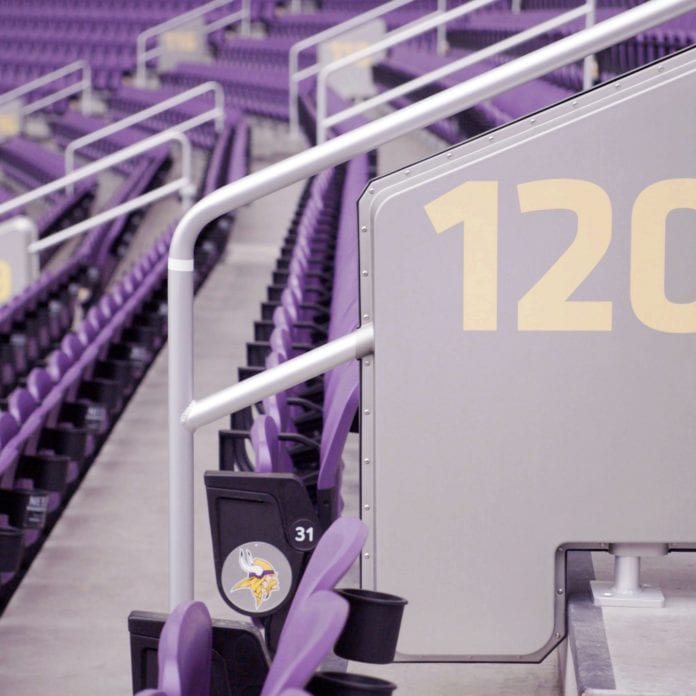Technology is the cornerstone of the modern fan experience, making connectivity in smart stadiums a requirement to support the growing digital expectations of sport and entertainment goers. In newer stadiums, paperless ticketing and stadium-specific smartphone apps are commonplace to improve fan experiences but require venues to process large amounts of cellular data at all times in all areas. There are countless factors involved in providing a network that meets these needs, and to be even slightly off in calculations can result in a multi-million-dollar problem.
Late last year, IBM filed a lawsuit against the parties responsible for the distributed antenna system (DAS) installation at the Atlanta Falcons’ Mercedes-Benz Stadium. The stadium faced issues with its cellular network infrastructure as antennas were improperly placed throughout the stadium, creating an expensive overfitting problem for the stadium and the NFL. To avoid these costly miscalculations, there are many precautions that systems integrators, original equipment manufacturers (OEMs), and operators can take to safeguard their network models.
Large stadiums and venues present a greater design challenge than an average office building due to the presence of vast open spaces and a high volume of guests. The fear that the signal won’t sufficiently cover a stadium may cause overcompensation for the network with an improper setup of remotes and/or antennas. Instead of creating a robust system that meets the required need, it can increase signal pollution and visitors will experience poor quality throughout the sports arena. In cases where this occurs, systems integrators, operators, and OEMs likely overfit the model.
Minding your materials
To avoid interference between sectors, network modelers must prioritize testing and modeling prior to venue installations. The initial step requires continuous wave (CW) testing before the design process by placing transmitters at potential antenna locations to assess the signal coverage. For example, two transmitters are placed in different areas, each sending out different frequencies, and the tester will conduct a walk-through in between the sectors to monitor when one transmitter drops off and the next one gets picked up. The goal of this process is to reduce overlap and decide which combination of RF devices is best for the implementation.
Following testing, network modelers must utilize design software, such as Ranplan or IBWave, to optimize and simulate how small cells, DAS, and Wi-Fi interact across indoor and outdoor environments while still factoring macro networks into the equation. Leveraging the design software helps modelers understand how technology specifications of the equipment, various building materials, and corresponding attenuation levels, and venue dimensions such as wall height and diagonal planes (for seating representation) converge in order to estimate the needed power level and placement of antennas.
By running the model with all of the required specifications, the software model may affirm or conflict with the physical testing which determines whether the network architecture will require reassessment. For instance, a system integrator may start with a mid-power DAS but then realize that a high power DAS is the best option due to interference from either the wall’s material or dimensions.
Network modeling software is essential in the network creation process and must be utilized alongside physical venue testing. Failure to do so will increase the risk of a costly fix post-installation in terms of both hardware and time.
Observing the macro network
Interference doesn’t always result from materials or venue dimension issues. Modelers often forget or don’t deem it necessary to inspect the surrounding macro network conditions, leading them to overlook the effect of nearby cell towers on the in-building design. If there is a cell tower close by, precautions must be taken to overpower the macro network and avoid interference. It’s a time-consuming process, but ultimately necessary to the groundwork of the overall shaping of a model.
Data collection
Data collection before and after the completion of the network helps paint a better picture of how the network is performing. Many RF technologies have remote monitoring systems capable of tracking performance metrics for a given implementation. These data points can help with future alterations to the system when interference or attenuation issues are presented. This may occur at no fault to the initial design, but be the result of a new upgrade to a venue such as a permanent or retractable dome.
The use of testing, network design software, and data analytics play a large role in avoiding expensive network re-designs. Telecom stakeholders and sports arena officials will save themselves time and money by following this approach to modeling in-building wireless networks.

